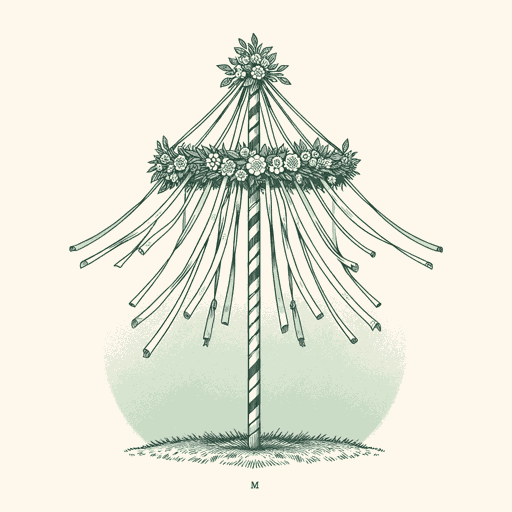26 pages • 52 minutes read
Young Goodman Brown
A modern alternative to SparkNotes and CliffsNotes, SuperSummary offers high-quality Study Guides with detailed chapter summaries and analysis of major themes, characters, and more.
Summary and Study Guide
Summary: “Young Goodman Brown”
“Young Goodman Brown” is a short story written by Nathaniel Hawthorne published in 1835 in The New-England Magazine. The story was later included in Hawthorne’s 1846 collection Mosses from an Old Manse. Most of Hawthorne’s fiction is set in New England and focuses on themes of morality, inherent sin of human beings, and anti-Puritan sentiment. In addition to “Young Goodman Brown,” some of his most famous short fiction works include “The Minister’s Black Veil” (1836), “The May-Pole of Merry Mount” (1837), “The Birthmark” (1843), and “Rappaccini’s Daughter” (1844). Hawthorne is perhaps best known for his dark romances, including The Scarlett Letter (1850), The House of Seven Gables (1851), The Blithedale Romance (1852), and The Marble Faun (1860), which collectively establish his significance as an author of American Romanticism. This guide uses the version of “Young Goodman Brown” published online by Columbia University.
Although the story was written and published during the emergence of American Romanticism, it is set just after the Salem Witch Trials in 17th-century Puritan New England. Goodman Brown, a young newlywed of three months, ventures out on an undisclosed errand to the edge of Salem village. Faith, Brown’s wife, worries over the late hour, but Brown reassures her that he must leave for the night and will return the next day. He insists that no evil will find her if she says her prayers and goes to bed. Brown observes her melancholy expression as he leaves and wonders if she knows about the evil purpose of his errand into the wilderness. Brown justifies his night away from Faith by resolving to return to her side and follow her to heaven once his errand is complete.
Brown travels a lonely, dark road through the forest, wondering if he will happen upon some “devilish Indians” or the devil himself. In the distance, Brown sees a figure seated at the base of a tree. The man, described as being about 50 years old and bearing a strong resemblance to Brown, is expecting him and walks along his side. Brown notes the traveler’s casual attire and worldly appearance, but the traveler’s black, snakelike staff stands out to Brown.
Brown doubts the errand and concludes he should not travel further. He tells the traveler that he has already gone too far, and that his family were good Christians who would never venture into the wilderness. The traveler assures Brown that his father and grandfather were his friends; they shared pleasant walks along this same path. Brown is skeptical of the traveler’s claims and reaffirms that his honest and God-fearing family would have no such wickedness. At Brown’s reluctance, the traveler reveals that, like Brown’s family, he is acquainted with deacons of churches and elected officials from many towns. Brown admits that he knows nothing of the lives of elected officials, but he questions how he would look the minister at Salem village in the eye after continuing this journey into the wilderness.
As Brown further resists the journey, the traveler points to a female figure whom Brown believes he recognizes as Goody Cloyse, his catechism teacher. Hoping to avoid being seen conversing with the traveler, Brown hides while the traveler keeps walking. When the traveler taps Cloyse on the shoulder with his staff, she recognizes him as the devil and tells him she is a witch on the way to a ceremony in the woods. Brown denounces Goody Cloyse’s choice to follow the devil instead of going to heaven but asserts that this is no reason to abandon his dear Faith, who awaits him at home. The traveler encourages Brown to rest and offers his staff in case Brown wishes to continue the journey.
Confident that he can return to the village with a clear conscience, Brown hears the voices of his minister and the deacon Gookin, who both appear to be on their way to the ceremony. Believing that the most respected people he knows have fallen to the devil, he promises to resist and give himself completely to God. Brown hears Faith’s voice coming from deep in the woods. He calls out to Faith but is met only with a distant scream among the murmur of voices and laughter. The pink ribbons she wears in her hair float down from the sky and catch on a tree branch.
Brown believes Faith has given herself to the devil. He grasps the traveler’s staff and is pulled through the forest of creaking trees, howling wild beasts, and yelling “Indians,” until he comes to a clearing. In the clearing at midnight, he sees trees ablaze, hears the church choir’s familiar hymn, and observes a rock that is serving as a pulpit. The rise and fall of light from the fire illuminates the faces of familiar churchgoers, including the deacon and minister. When he sees a shrouded female figure who is revealed as his wife Faith, he realizes that he and Faith are the converts to be sacrificed at the ceremony. He yells out to Faith to avoid the “wicked one,” but he does not know whether she escapes.
Brown walks slowly through the streets of Salem village the next morning. He sees evil in the townspeople, and when the minister offers Brown a blessing as he passes him on the street, Brown shrinks away from him. He wonders to what wizard people pray when he hears the deacon’s lecture through the church’s open window. He passes Goody Cloyse reading Bible verses to a young child, and he snatches the girl away from her. When he arrives home to his excited wife Faith, he refuses to greet her.
Near the story’s conclusion, the narrator suggests that Brown’s meeting in the woods was only a dream of a witch meeting; however, the experience shakes Brown’s trust in religious figures and his wife Faith. Though Brown lives a long life, it is marred by misery and gloom.



Related Titles
By Nathaniel Hawthorne















